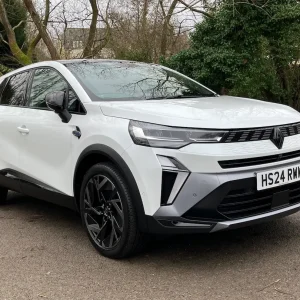In some ways, the arrival of Jaguar’s new XF has been overshadowed by its young upstart of a little brother, with the XE being a brand new model entering a bigger volume segment.
But if that is the case it would be a shame because the XF is a much more impressive car that, without wishing to spoil the surprise unfolding over the rest of this review, is much nearer class-leading status than its smaller sibling.
Using the same new Ingenium diesel engines as the XE, the entry XF driven here is powered by a 163hp 2.0-litre unit developed by JLR and built at a new factory in Wolverhampton. It moves the XF up with the class best for efficiency among automatic transmissions, coming in at 109g/km – the same as Audi’s A6 Ultra and the Lexus GS300 hybrid, and 1g/km better than BMW’s 518d, although the 520d is at 109g/km. The Mercedes E220 CDI is at 114g/km.
We’ll get onto how the car drives in a minute, but it’s impossible to go any further without addressing the whole-life costs. Remarkably, the Jaguar is, at 63.0p per mile according to KwikCarcost, 5.5p per mile better than any of its very capable German rivals, with the Audi, BMW and Mercedes coming in at 68.5ppm, 68.6ppm and 70.4ppm respectively.
This is achieved thanks to a combination of a 41.7% residual value prediction – while the German saloons are all at 34.2-36.0% – and an insurance group five bands lower, which means a cost saving of £540-£900 over three years.
The numbers give Jaguar’s executive saloon a good start, although its rivals are all high-quality machines offering premium driving experiences. But the XF can at least match any of them, and gives a compelling all-round case for being the best car in its class, no matter what the criteria.
The interior is a fairly subtle upgrade of sober classiness compared with the previous XF, which was nicely designed, and seems a notch up on its predecessor, while the driving position feels like a comfortable cocoon. The multimedia system is maybe not the strongest point, and though decent it’s a little frustrating to use at times until you get your head around its nuances.
The boot is large, and almost has too much length in terms of retrieving rogue shopping tins from the far end. It’s a huge shame, though, that Jaguar isn’t even saying that there will be a replacement for the Sportbrake estate version, let alone when it could arrive.
On the outside, the front end is more aggressively styled, but that maybe doesn’t follow round to the back, which is a little less characterful.
To drive, the XF is as impressive as it is on paper. Well-weighted meaty steering combines with a firm rather than oppressive ride. The engine offers enough performance to leave no complaints, and refinement is much better than the XE, although it’s not the car’s biggest strength.
Overall, it’s tough to fault the new XF. Running costs, emissions, residuals, driving experience, equipment, styling and all-round appeal all at least match, if not beat, the competition. It really is a very impressive car.
Jaguar XF 2.0 i4 163 Prestige |
| Model price range £32,245-£49,745 |
| Residual value 41.7% |
| Depreciation £19,820 |
| Fuel £4352 |
| Service, maintenance and repair £2602 |
| Vehicle Excise Duty £40 |
| National Insurance £2674 |
| Cost per mile 63.0p |
| Fuel consumption 68.9mpg |
| CO2 (BIK band) 109g/km (19%) |
| BIK 20/40% per month £108/£215 |
| Warranty 3yrs/unltd miles |
| Boot space (min/max) 540/963 litres |
| Engine size/power 1999cc/163hp |





